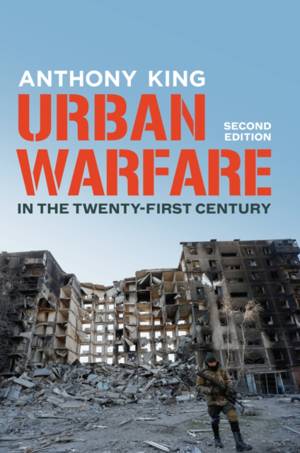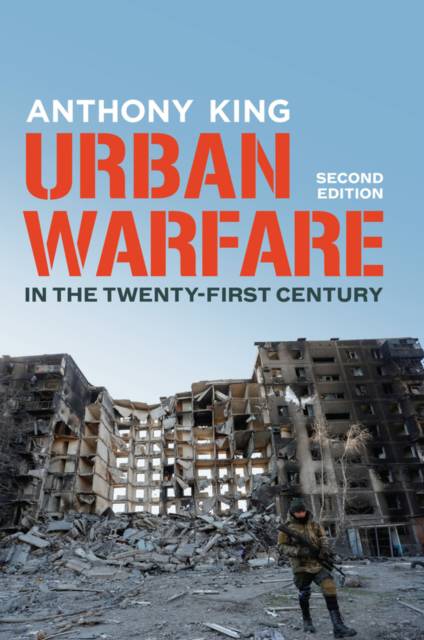
Bedankt voor het vertrouwen het afgelopen jaar! Om jou te bedanken bieden we GRATIS verzending (in België) aan op alles gedurende de hele maand januari.
- Afhalen na 1 uur in een winkel met voorraad
- In januari gratis thuislevering in België
- Ruim aanbod met 7 miljoen producten
Bedankt voor het vertrouwen het afgelopen jaar! Om jou te bedanken bieden we GRATIS verzending (in België) aan op alles gedurende de hele maand januari.
- Afhalen na 1 uur in een winkel met voorraad
- In januari gratis thuislevering in België
- Ruim aanbod met 7 miljoen producten
Zoeken
€ 112,95
+ 225 punten
Uitvoering
Omschrijving
War is urbanising. From Mosul to Mumbai, Aleppo to Marawi, the largest and most intense battles of the twenty-first century have taken place in densely populated urban areas. In the Ukraine War, Russian and Ukrainian troops have converged on urban areas, Kyiv, Mariupol, and Bakhmut, to fight brutal attritional sieges. Meanwhile the Battle of Gaza rages.
Through a close analysis of recent urban conflicts and their historical antecedents, sociologist Anthony King explores the changing typography of the urban battlescape. Whilst many tactics used in urban warfare are not new, he shows how operations in cities today have coalesced into localised micro-sieges, which extend from street level - and below - to the airspace high above the city, as combatants fight for individual buildings, streets and districts. At the same time, digitalized social media and information networks communicate these battles to global audiences across an urban archipelago, with these spectators often becoming active participants in the fight.
Fully revised and updated to include detailed examples from Ukraine and Gaza to illustrate the anatomy of twenty-first century urban warfare, the second edition of this popular text is a timely reminder of the costs and the horror of war and violence in cities. As such, it offers an invaluable interdisciplinary introduction to urban warfare in the new millennium for students of international security, urban studies and military science, as well as military professionals.
Through a close analysis of recent urban conflicts and their historical antecedents, sociologist Anthony King explores the changing typography of the urban battlescape. Whilst many tactics used in urban warfare are not new, he shows how operations in cities today have coalesced into localised micro-sieges, which extend from street level - and below - to the airspace high above the city, as combatants fight for individual buildings, streets and districts. At the same time, digitalized social media and information networks communicate these battles to global audiences across an urban archipelago, with these spectators often becoming active participants in the fight.
Fully revised and updated to include detailed examples from Ukraine and Gaza to illustrate the anatomy of twenty-first century urban warfare, the second edition of this popular text is a timely reminder of the costs and the horror of war and violence in cities. As such, it offers an invaluable interdisciplinary introduction to urban warfare in the new millennium for students of international security, urban studies and military science, as well as military professionals.
Specificaties
Betrokkenen
- Auteur(s):
- Uitgeverij:
Inhoud
- Aantal bladzijden:
- 304
- Taal:
- Engels
Eigenschappen
- Productcode (EAN):
- 9781509563357
- Verschijningsdatum:
- 19/05/2025
- Uitvoering:
- Hardcover
- Formaat:
- Genaaid
- Afmetingen:
- 152 mm x 229 mm
- Gewicht:
- 576 g

Alleen bij Standaard Boekhandel
+ 225 punten op je klantenkaart van Standaard Boekhandel
Beoordelingen
We publiceren alleen reviews die voldoen aan de voorwaarden voor reviews. Bekijk onze voorwaarden voor reviews.









